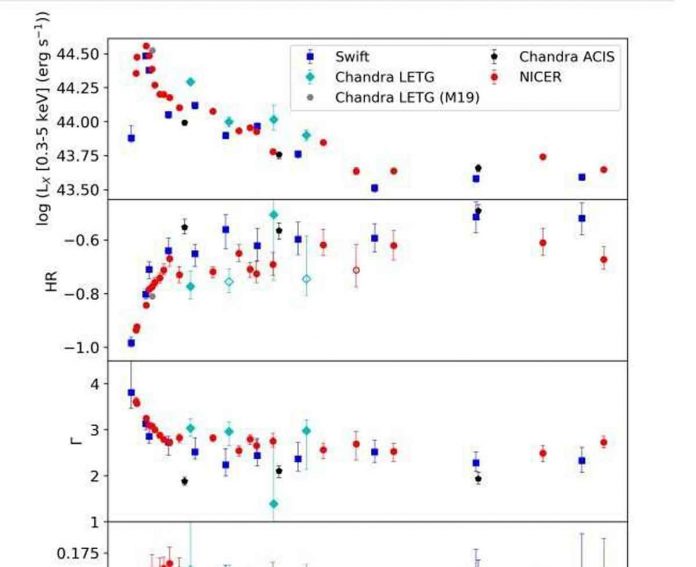Astronomers from the Ohio State University (OSU) have performed a detailed X-ray observational campaign of a mysterious nuclear transient event known as AT2019pev. The study was published on the arXiv pre-print server. The study offers more clues into the nature of this peculiar object.
Nuclear astrophysics is key to understanding supernova explosions and in particular the synthesis of the chemical elements that evolved after the Big Bang. Investigating nuclear transient events could be essential in order to advance our knowledge in this field.
AT2019pev The host of this transient was found to be a narrow-line Type I Seyfert galaxy at a redshift of 0.096. Subsequent observations of this transient revealed that it showcased features of tidal disruption events (TDEs) and active galactic nuclei (AGNs).
Scientists wanted to unveil the true nature of AT2019pev. A team of astronomers led by OSU’s Zhefu Yu carried out comprehensive X-ray observations. Scientists used NASA’s Swift and Chandra spacecraft and the Neutron star Interior Composition Explorer (NICER) onboard the International Space Station (ISS).
The observations found that the X-ray luminosity of AT2019pev increases by a factor of five in about five days from the first Swift epoch to the peak. But it decays by a factor of ten with steeper slopes in early epochs and then flattens with a weak re-brightening trend after approximately 105 days.
The X-ray spectra show a “harder-when-brighter” trend before peak and a “harder-when-fainter” trend after peak. It seems to suggest a transition of accretion states. Scientists found that the optical light curve rises toward an equally bright or brighter peak 223 days after the optical discovery and fades when the source is observable again.
The astronomers concluded that this transient more closely resembles an active galactic nucleus. They added that the evolution of the temporal power-law index of AT2019pev is more consistent with AGNs than TDEs. The re-brightening in the UV/optical bands of AT2019pev is natural for AGNs with stochastic variability.

